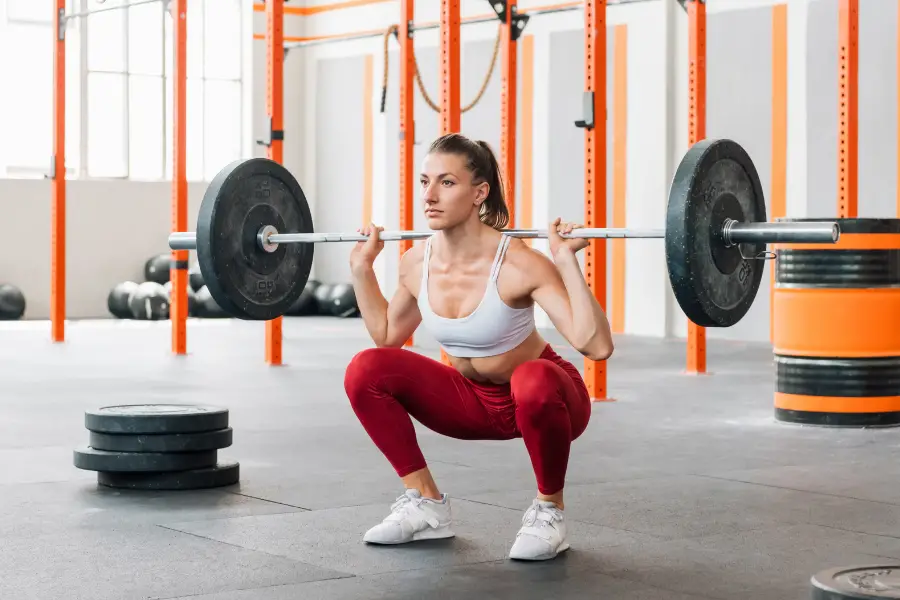Gym mirrors are expensive and often forgotten in a home gym. Is it OK to build your home gym without mirrors or are you making a mistake?
Working out without mirrors is effective as long as you focus on body awareness, proper form, alternative feedback methods, and listening to your body. Gym mirrors can improve workouts by aiding form, tracking progress, boosting confidence, and providing visual cues and corrections.
Let’s dive a little deeper into what you miss without mirrors, how mirrors can improve your workouts, and what you should do.
Contents
Is Working Out Without Mirrors OK?
Working out without mirrors is perfectly fine and can be just as effective as working out with mirrors. While mirrors can help check form and technique, they are not essential for a successful workout. Many people have achieved great results and made progress in their fitness journey without the use of mirrors.
Here are a few points to consider:
Body awareness
Developing body awareness is crucial for any type of workout. By paying attention to how your body feels and moves during exercises, you can focus on proper form and alignment without relying on visual feedback from mirrors. This involves understanding the movements, engaging the targeted muscles, and maintaining control throughout the exercises.
However, this can be difficult if you’re not familiar with the exercise. The first time you do a new exercise you don’t know what it should feel like so it’s hard to correct your form based on awareness. The more experience you have with different movements, the easier this becomes.
For people new to working out, building body awareness takes a long time, and feeling what’s right and wrong when doing a new exercise is very hard. The counterpoint to that is that beginners usually don’t know what to look for whether they have a mirror in front of them or not. That’s why some coaching is very valuable for almost everyone who starts in the gym.

Proper form
Whether you have mirrors or not, it’s important to learn and practice proper form for each exercise. You can utilize resources like workout tutorials, and exercise descriptions, or even seek guidance from a fitness professional or workout buddy.
By understanding the correct form and focusing on executing the movements correctly, you can minimize the need for visual feedback. A trainer giving you mental cues to work from is very helpful. In a garage gym there usually aren’t many trainers milling about so remote coaching could be an option.
Alternative feedback methods
Without mirrors, you can still use other feedback methods to assess your form and technique. For example, recording your workouts with a camera or smartphone can allow you to review your performance and make necessary adjustments. You can also work out with a training partner who can provide feedback and help you maintain proper form.
Listening to your body
Pay attention to how your body feels during each exercise. Proper form often feels natural and comfortable, while improper form can lead to discomfort or strain. By listening to your body and making adjustments based on how the movements feel, you can ensure a safe and effective workout.
However, once again this is very difficult for beginners since pretty much everything feels uncomfortable and unnatural. Beginners also often don’t know biomechanics to know what is going on if something feels uncomfortable, if it’s dangerous, or just something to get through.
If you’re not sure if you need a mirror or not and would like to save some money, in almost all cases it’s not hard to add a mirror to your gym later on. Maybe you’ll have to move some equipment around but mounting a mirror isn’t hard as long as you have an empty wall.
Alternatively, you can make do with a cheap mirror for now and add a better one later on. Click the link to find some very affordable options for gym mirrors.
Making Progress Is Key

You work out because you want to reach a certain goal and ideally you don’t get hurt in the process. To reach your set goal, the most important aspect of working out is consistency, effort, and focusing on the key principles of exercise. The most important of which is; progressive overload. Or simply said, make it more difficult every time.
While mirrors can be useful tools, they are not mandatory for a successful workout. Doing more repetitions or adding resistance doesn’t require a mirror.
However, as said above, ideally you don’t want to get hurt in the process. Keeping the right exercise form is crucial to not getting hurt. Deadlifting an empty bar with bad form is probably fine, but once you progress to heavier weights, the form has to be good otherwise it’s very easy to get hurt.
How Gym Mirrors Can Improve Your Workouts
Mirrors are often included in commercial (and many home/garage) gyms to allow individuals to check their form and technique while performing exercises. While gym mirrors aren’t strictly necessary, they can improve your workouts in a few ways.
If you want to see which gym mirror is recommended for home gyms, click the link.
Gym mirrors can offer several benefits that can enhance your workouts in various ways. Here are some ways in which gym mirrors can improve your workouts:
Form and technique
Mirrors provide visual feedback that allows you to check your form and technique during exercises. They enable you to observe your body alignment, posture, and movement patterns, ensuring that you are performing exercises correctly and effectively.
This helps prevent injuries and maximizes the benefits of your workouts. Using the correct form puts your body in the position that is the least dangerous while also making the exercise harder on your muscles for the most benefit.
Mind-muscle connection
Mirrors can help you develop a stronger mind-muscle connection. By watching yourself perform exercises, you can better focus on the targeted muscles and ensure that they are being engaged and activated properly. This enhanced connection can lead to more efficient and effective workouts.
Progress tracking
Gym mirrors allow you to monitor your progress visually. You can see changes in your physique, posture, and muscle definition over time, providing motivation and a sense of accomplishment. Seeing your reflection can serve as a visual reminder of your fitness goals, which can help you stay motivated and committed to your workouts.

Confidence and motivation
Mirrors can boost your confidence during workouts. Being able to observe your form and progress can instill a sense of confidence in your abilities and encourage you to push harder. Additionally, seeing yourself in the mirror can serve as a reminder of your commitment to fitness and inspire you to stay dedicated to your goals.
Visual cues and corrections
Trainers or workout partners can use gym mirrors to provide visual cues and corrections. They can observe your form from different angles and provide real-time feedback to help you make adjustments and improvements. This can be especially beneficial for complex exercises or movements that require precise form.
Consider The Type Of Workout
All the points above are written from the perspective of weightlifting. Not all workouts involve weightlifting though. So does that mean you don’t need mirrors for other types of exercise? It depends on the specific type of exercise.
For cardio workouts, it’s not a big deal to have no visual feedback. Sure, your running or cycling form can be better or worse but a mirror isn’t the right tool for correcting this.
Yoga, Pilatus, and similar workouts are really focused on form, alignment, and technique so a mirror is possibly even more important for those types of exercise. With a mirror, you can easily spot if you can bend further one way than the other for example.
For (kick)boxing and other combat sports, a mirror can be useful for shadowboxing but not so much if you’re working on a heavy bag or with a sparring partner.
If you’re not sure if you need a mirror for your specific workout, think about a commercial gym or other place where you practice your sport. Do they use mirrors in those locations for your workout? If so then you’ll benefit by having them in your home workout room.

